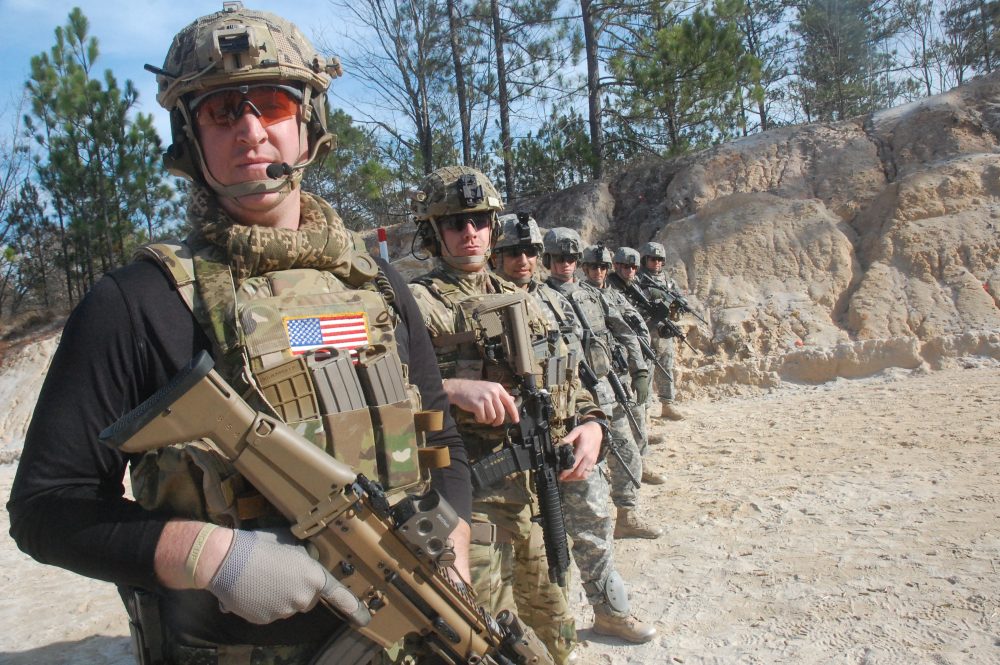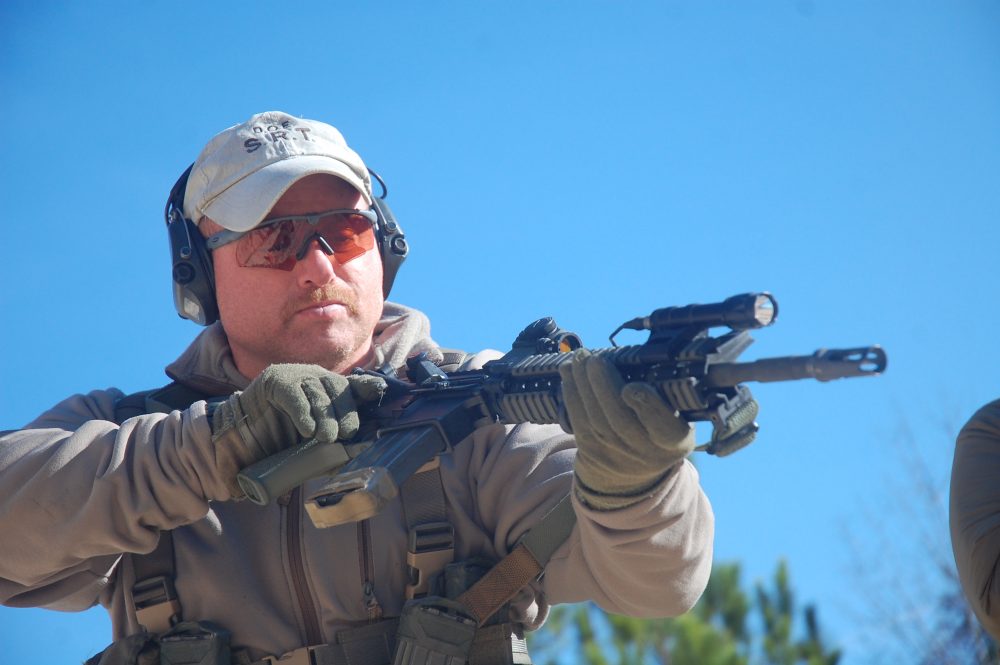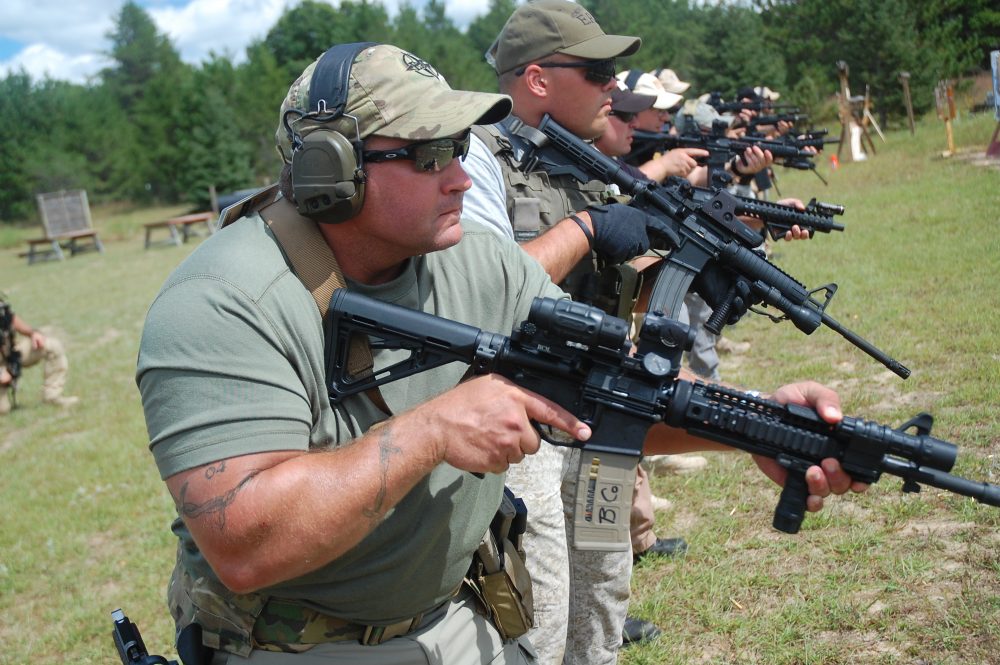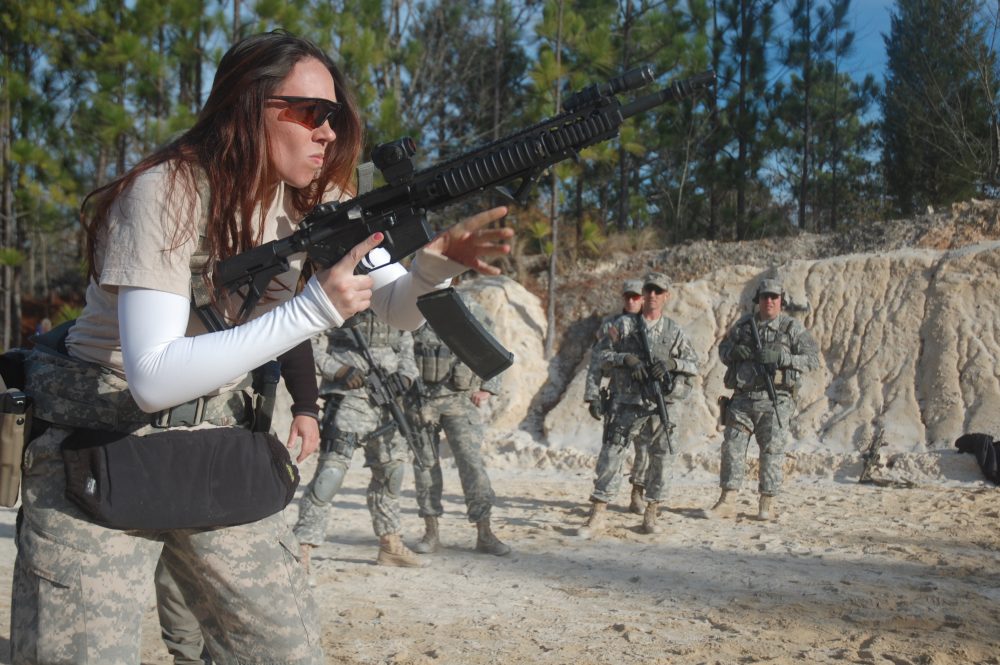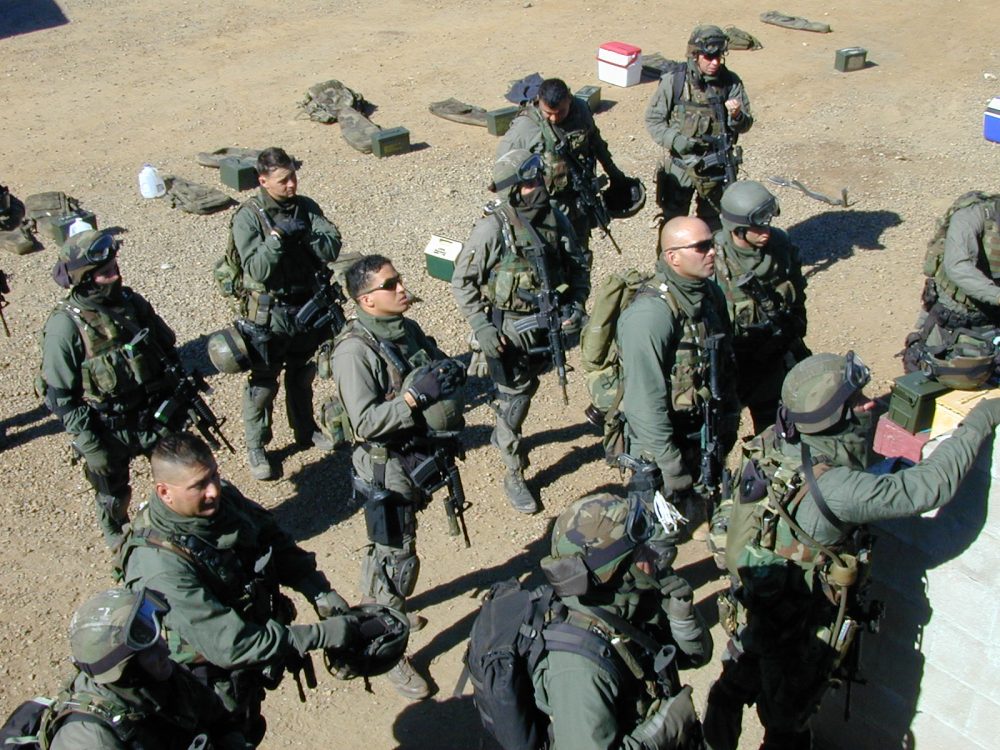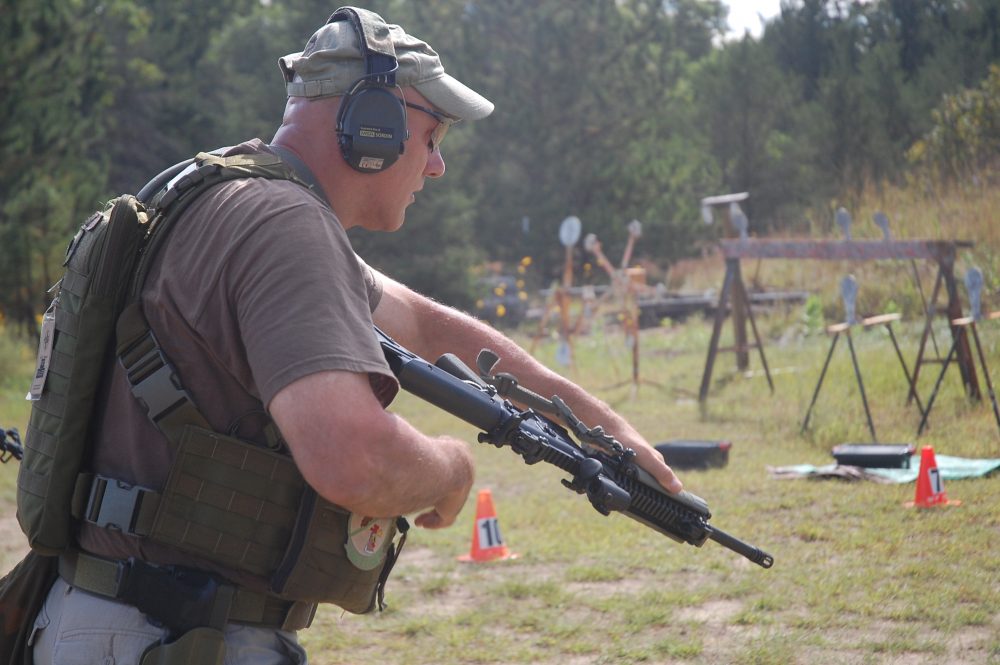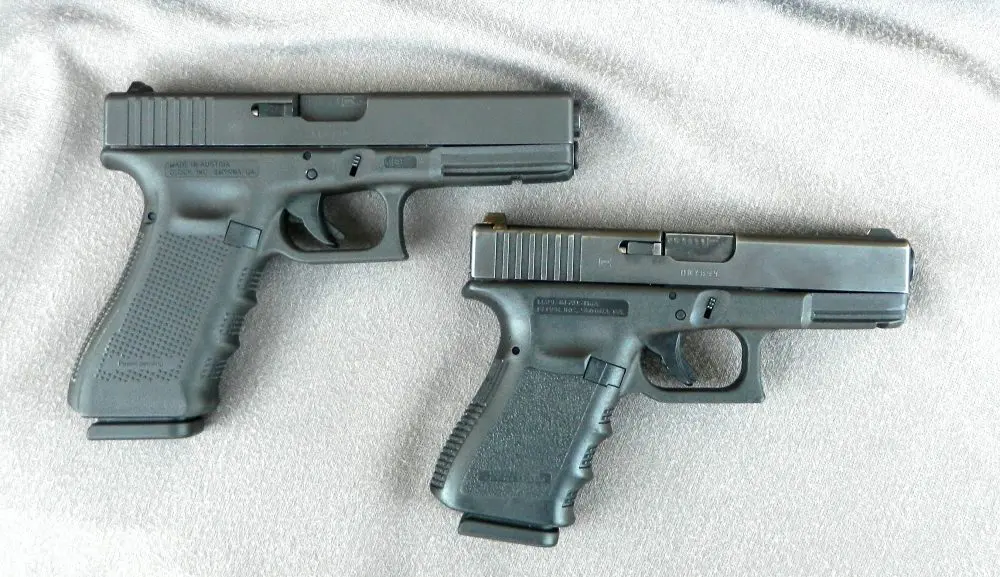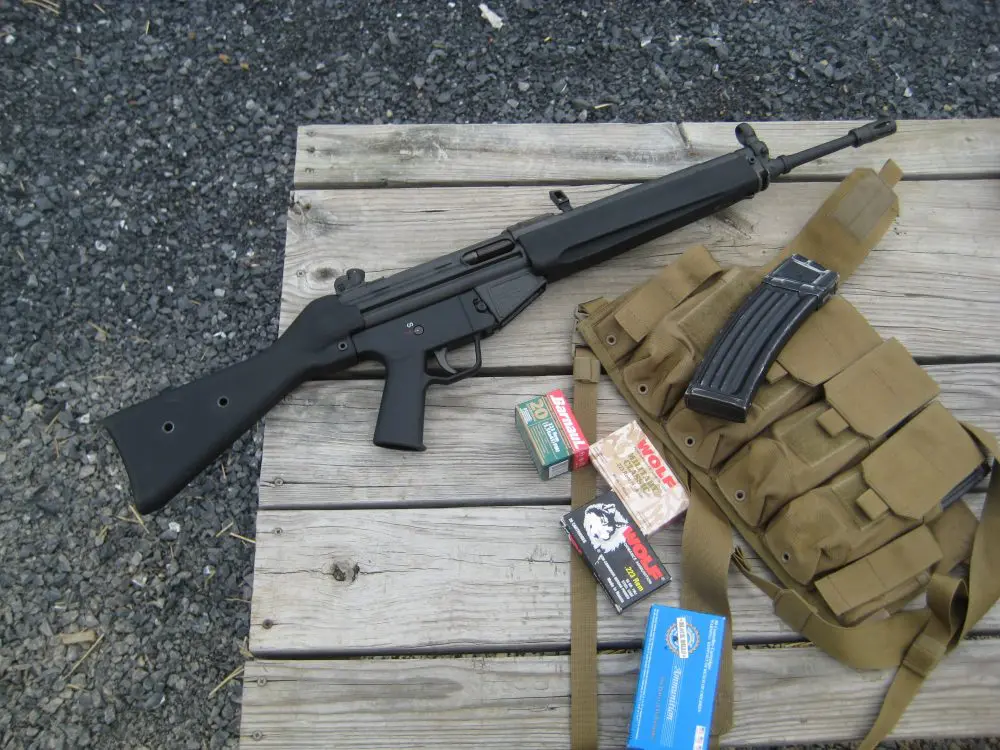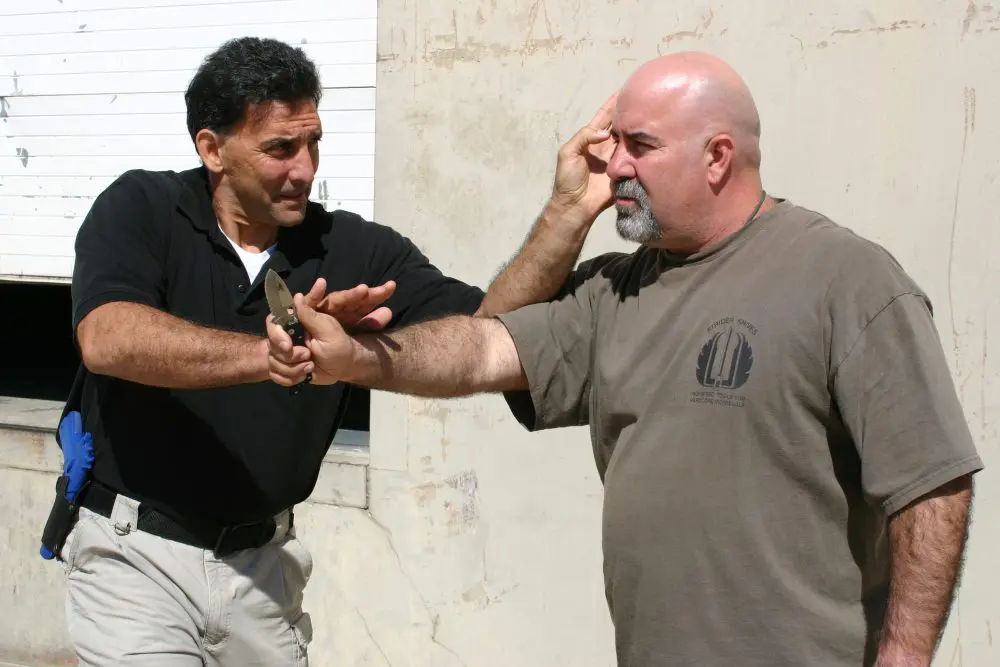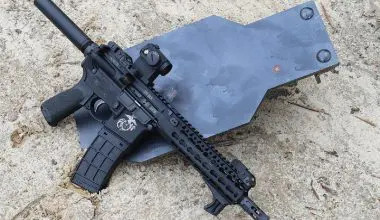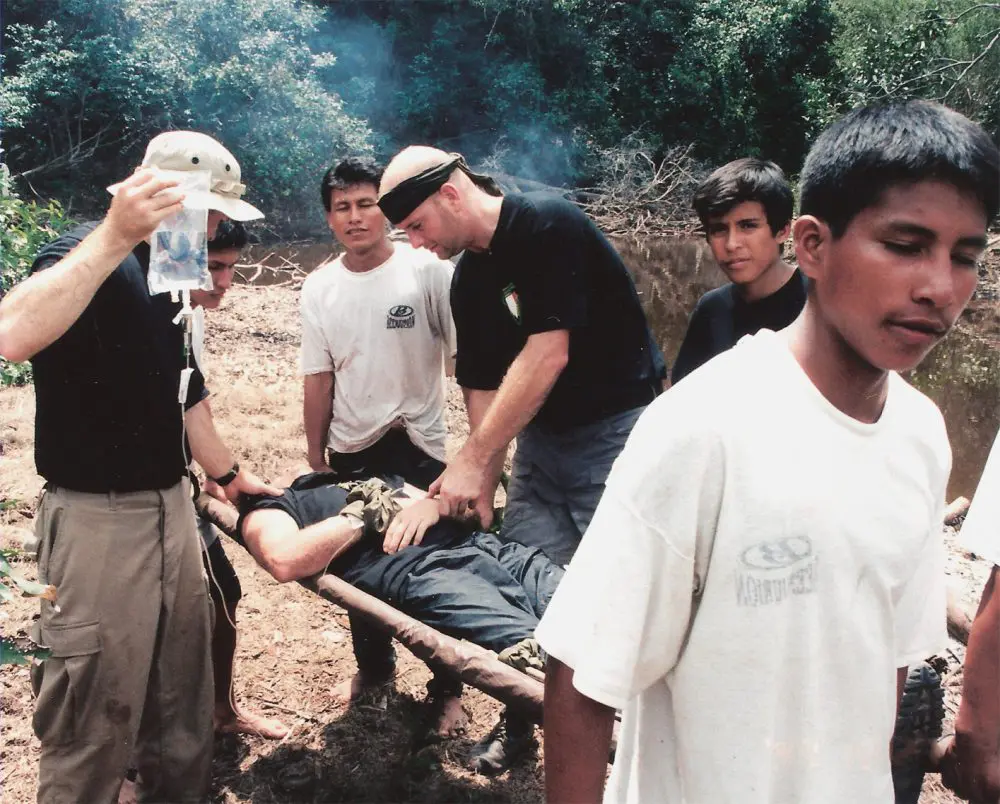How we fight has always been a complicated series of events, and the training required to accomplish the goal of winning the fight has mostly been wanting. This has become obvious in police agencies’ and the military’s preoccupation with annual qualification, confusing it with training.
It has always been disturbing how little effort is spent teaching cops how to efficiently and properly use Deadly Physical Force as opposed to the efforts put forth writing summonses and handling domestic violence issues.
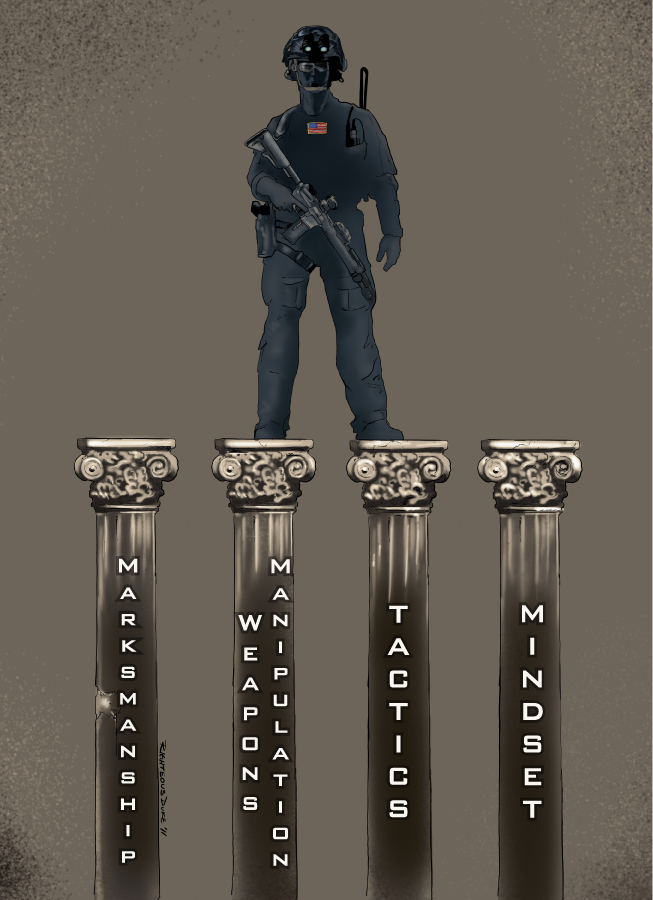
Table of Contents
THE COMBAT TRIAD
In an attempt to enhance proper training, the late Lt. Col. Jeff Cooper put forth the Combat Triad, which consists of these three items:
- Marksmanship
- Weapons Manipulation
- Mindset
Unfortunately, the triad doesn’t cover it all. One thing grossly lacking is tactics. It probably happened that way because at the time the Combat Triad was initiated, most shooting was done on the square range. And because most firearms training continues to be conducted on the square range, the end result is training that is limited in scope and usefulness.
How we conduct training has changed drastically since those days, and the choice had to be made to stagnate or move forward with better ways of doing things.
At EAG Tactical, my fellow instructors and I have changed the Combat Triad a bit. Instead of using a triad, we now use pillars—four of them—to make the point.
FOUR PILLARS OF WISDOM
For our purposes, it looks like this:
1. Marksmanship. This is the end state. When all is said and done, we have to put rounds into the threat. Inability to do this will result in mission failure. However, marksmanship alone is useful only in competitive shooting games.
Marksmanship is relatively easy to teach and learn.
2. Weapons Manipulation. Running the gun, to include loading, reloading (both tactical and speed reloading), manipulation of safeties, bolt hold open devices, engaging multiple targets, and so forth.
Manipulation is sadly lacking in most communities, but is needed in order to succeed.
Manipulation is somewhat more difficult to teach, as many have no idea how it fits in the operational concept.
3. Tactics. Near-term actions taken to solve specific problems or accomplish specific goals. This is the addition, and its inclusion has been overlooked for a long time. The proper use of tactics gives us the ability to maneuver on and defeat an enemy with minimal loss.
Tactics is an art, and to use it properly, one must have an eye for terrain and construction, along with knowledge of architecture. A tactician must be able to think ahead and also think on his feet.
4. Mindset. Cooper’s definition remains valid. It is the state of mind that ensures victory in a gunfight. It is composed of awareness, anticipation, concentration and self-control. Dexterity and marksmanship are prerequisite to confidence, and confidence is prerequisite to self-control.
Bad Bob Moran epitomizes one with the right mindset. He is professionally competent, physically tough and mentally hard. Bob has just finished a drill at the Mid Carolina Rifle Club in Congaree, South Carolina. He has assessed, gaining situational awareness within his immediate area, and is now gaining SA with his carbine.
TEACHING MINDSET
I am firmly convinced that mindset cannot be taught. Most people exist in a state of constant denial, and are without a clue. They lack the ability/will to fight on any level, and are so locked into Condition White that they will only know if something happened after the fact.
Certain personality types are born with the mean gene that Col. Bob Young, USMC (Ret.) spoke about so often at the inception of the Marine Corps Security Forces in the 1980s.
And for those who possess this gene, though it may be dormant, it is possible to enhance the combat mindset.
Marksmanship is the easiest to teach. It just isn’t that hard, except for those who don’t want to do it.
Manipulation can easily be taught to those willing to learn.
Tactics can likewise be learned, but only by those who have a vision—the ability to see and understand a situation as it is unfolding. For those who can, it is a true gift.
Mindset is different. I do not for one New York minute believe that it can be taught to those who do not possess that mean gene. It may lie dormant in some, awakened because of a traumatic event or sudden epiphany, but it is there.
It surely can be built upon and enhanced, but only for those who do possess that mean gene.
There are no shortcuts. You cannot miracle your way to winning a fight. The desire to defeat the enemy has to come from within.
All four pillars are important and in some minds, equal. But as in everything else, there are different levels of equality. Mindset is above all else, because it is not something that can be taught.
We can open the eyes of many by making them understand concepts, and for some, repetitions of specific TTPs can give them a baseline on how to act.
During any event—training or operational—something is likely not to go according to plan. And the more complicated the plan, the more likely that more things will go wrong. What does wind up going sideways may be something small or a complete showstopper.
When this happens, those involved are expected to be able to identify the problem, rectify it immediately, and continue the mission.
Unfortunately, a great number of people are unable to do any/all of the above.
And this leads us back to that which is primary—mindset.
You have to be focused on the job at hand and not let anything stand between you and winning the fight. Paul Buffoni, owner of Bravo Company Mfg, keeps his skills sharp by training regularly. Can you afford not to?
DEFAULTING TO ZERO
At EAG, we see a fair number of people who come to class with a great attitude and have guns and gear that are all good to go. Some will be very accomplished shooters who understand the relationship of man, sights and trigger. They do everything just right—up to the second where they do something wrong.
And then they fail. That failure may be momentary, or it may be a complete vapor lock, but the end result is the same. They will not complete the task at hand.
Their internal computer defaults to zero, leaving our former stalwart standing there in front of God and everyone, like a deer in the headlights, having no clue what just happened or what will happen next.
This change of status, moving from (in his mind) hero to zero, is the result of several interrelated failings.
BREAKING DOWN THE BREAKDOWN
First and foremost is a lack of situational awareness—losing the understanding of what is going on around you, where others are in relation to you, and the condition of your weapon(s).
Second is a failure to anticipate. This is common to some overachievers who also lack the best teacher in the world—experience. They surge blithely ahead, truly believing that they will succeed in this, because, after all, they are who they are and not some lesser type.
Third is poor/insufficient training, an unfortunately common occurrence. The big military has been in a shooting war for almost a decade, yet the training received by those whose job it is to carry a rifle is sadly lost in a maze of institutional inertia and bureaucratic intransigence.
This happens to some extent in every class, even though we take steps to avoid it.
Mindset is gender neutral. Blue Force Brittney is executing a speed reload on the way down to kneeling during a graded exercise. She knows what is expected and how to execute the drill. Her focus is downrange because the bad guys are not static, two-dimensional pieces of cardboard. When she got ready to shoot, the OIC of the Soldiers in the background told his men to “Watch her shoot this.” There was a reason for that.
MAKE READY
In our in brief, we discuss how to “make ready.” We consider this to be making ready to fight, and we emphasize doing it exactly the same way every time.
- Protect your eyes.
- Protect your ears.
- Fully load your pistol: insert a magazine, chamber a round, conduct a press check, and tac load a new magazine into the gun. We load the pistol first because it is out of sight and therefore—for some—also out of mind. We top off the pistol because it is the weapon of last resort, and if you need to jerk that blaster, you may need all the ammo you have.
- Load the Carbine. Remove a magazine and feel for the top round. Insert magazine with a PUSH/PULL.
- Chamber a round. Remove magazine and feel for top round. Did it switch sides? If so, reinsert magazine with a PUSH/PULL.
- Feel that the bolt is forward. Close the dust cover and engage the mechanical safety. Check that your red-dot sight is on (Aimpoint). Turn your red-dot sight on (EOTech).
We do this exactly the same way every time. But we still see students come up to the line/enter the shoot house with no magazine in the mag well.
Why? The answer is simple—they lost track of what they were doing, neglected to do what needed to be done, and wound up deficient. In training, it is only an embarrassment or humiliation, but in the real world, it could be much worse.
EQUIPMENT FAILURE
Another very common issue is what to do when the big gun goes south. This is not a complex decision to make, but tactics drive the TTPs. SOPs may vary, but at close range (maybe not to exceed 25 yards) and if armed with a pistol, the “A” answer is to go to the blaster and continue the mission.
If past the range at which a pistol may be useful, seeking cover and getting the big gun running (by reloading or reducing the malfunction) would be indicated.
Sadly, a lot of people fail to grasp the concept that having an operable gun in your hand might be the difference between having a great war story and having a Memorial Highway Overpass named after you.
And I am at a loss to understand why. When faced with a fight, the thing to do is win the fight. Anything that interferes with that should be avoided. Yet people will stand there (once more in front of God and everyone) and futz around with that broken/empty gun while they are a few feet in front of the target.
Madness…
All too often, I get this comment from students: “If this was for real, I’d do it differently.”
Actually sport, you would not. You would not rise to the occasion, but rather simply default to your level of training.
The mark of a professional is to accept criticism without complaint. These Marines of 1st Force Reconnaissance Company receive their debrief at Camp Pendleton circa 2000.
VIDEO GAMES ARE NOT TRAINING
A further problem—and a very real one—is that a great many people spend way too much time watching television, movies and playing video games and then, unconsciously or not, accept this as genuine training.
Sure, and I can absolutely believe that pointing a gun in the general direction of a bad guy and working that trigger at warp speed will result in taking down hordes of bad guys with a single magazine.
About as much as I believe that our hero can see a frag detonate in the hallway and outrun the blast wave/frag pattern.
FIRST-PERSON SHOOTER
I had a kid in a shoot-house class—good kid, bright, and jocked up in gear that would make a Tier 1 Shooter envious. First-class everything, to include a PTT switch—except he was a college student and had no radio; a roster number, except he was a college student and not on anyone’s team.
On the very first run in the house, he ignored all the training and reverted to his idea of what he should do as opposed to what we were training him to do. Encountering an unknown target, he challenged it in a screaming voice while dancing completely around it, for almost a full 360 degrees.
A mentoring session followed, and resulted in his running (yeah, running) up to a second unknown target while shooting a long Non Standard Response (NSR) into this target.
More mentoring.
When questioning someone as to why they did/neglected to do something, I will often get the Guppy Look followed by hunched shoulders and “I dunno…”
Fair enough, but if you don’t know, who does? Why did you perform or neglect to perform a certain act without knowing why?
DEFAULTING TO ZERO…AGAIN
The answer is simple. When faced with unexpected difficulty, some people will simply default to zero. Their internal circuitry has not been sufficiently developed to permit them to respond to certain stimuli, so they shut down. They will be incapable of taking action.
Can this be rectified? It can, but it requires an honest self-evaluation of your motives for seeking training as well as your capabilities.
During malfunction drill, Pat Fuller transitions from non-working carbine to a working pistol. Getting a working gun into your hands is the only correct course of action you have left. But for some reason, there are shooters who fail to understand this—and default to zero.
REASONS FOR TRAINING
Not everyone who trains is a hairy-chested, steel-bellied commando. Many are in fact professionals who use training to enhance their ability to win the fight.
Many average earth people likewise attend training to improve their skill sets because they have a clear understanding that being prepared is never a bad thing.
Yet others do it because it’s fun and they want to be challenged. Some may consider it to be like Gun Camp, and that’s fine too. As Americans, we have the right to possess firearms, and with that comes the responsibility to know how and when to use them.
There is a certain amount of anxiety attached to attending training. Everyone approaches Training Day 1 with the attitude that they will be sharp, listen, and function perfectly.
At the end of TD1, they may realize that there are some roadblocks in the path to glory.
At the end of TD2, there are some who may be physically and/or emotionally drained, and all they want to do is get it over with. That is not a state of mind conducive to learning.
It goes downhill from there. If you do not have your head in the game, nothing good will come of it.
SOLUTIONS?
Sure. Be prepared, physically and mentally. Keep an open mind. You are paying to receive instruction—allow that to happen.
Have realistic expectations. If you truly believe you will be perfect, you’re setting yourself up for a hard fall. If perfection exists, no one has yet been able to find it. Instead of trying to attain an unobtainable goal, focus on enhancing your skill sets.
Don’t waste your energy trying to keep up with others in the class. Yes, there are those who can do that, but they exist on another level, where winning is not a matter of pride but of life itself.
If you are struggling to keep up, refocus. If those shooters on your left and right have dark clouds of hate and discontent floating over their brain housing groups, and you have visions of unicorns frolicking in fields of flowers, you may be in the wrong slot.
Or you may need nothing more than some attitude adjustment to get back on track.
You may never do as well as you want, but consider that a series of small victories will eventually add up to something worthwhile.
It is not about who made the gun, the caliber or type of ammunition. It is not about the sights or the magazine or the number of morale patches you have festooned to your camo pattern du jour.
It is about what is in your mind and heart.
Pat Rogers is a retired Chief Warrant Officer of Marines and a retired NYPD Sergeant. Pat is the owner of E.A.G. Inc., which provides services to governmental organizations and private citizens. He can be reached at [email protected].
SOURCE:
Righteous Duke
www.righteousduke.com
